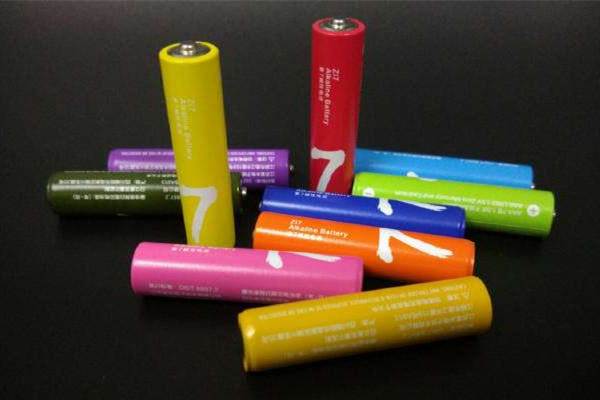How to Make Lithium Ion Battery
APR 23, 2020 Pageview:1075
What is a lithium-ion battery? Well, it is known to be one of the best renewable sources of energy for small electric equipment or appliances and electric-powered tools. There has been extensive research regarding this technology and is now at a stage where it is expected to be soon used for more heavy energy-consuming appliances like electronic vehicles.
This type of battery has certain pros, it is very much eco-friendly as they carry fewer toxic metals compared to other batteries in lithium range, they are also quite dense and lightweight with high energy density, having more charge cycles & low discharge rate.
There is more than one way of making a lithium-ion battery. Today we discuss things like the materials required for making a lithium-ion battery, the process of its making & also the tools required for its processing. With all this it is also very important to learn that we will not be just assembling parts, well yes, we will be doing that but with this, we have to make sure the installation of a battery management system that will be responsible for battery’s long life.
materials required for making lithium-ion battery:
We will learn how to make a lithium-ion battery of 5000mAh/11.1V by combining 18650 lithium-ion cells in a similar pack. We will learn how to make such a battery, also how to connect it with a BMS also known as Battery Management System & making a decent cover for this battery. For this we will be needed:
1. 6 Lithium-ion cells INR18650-25R having a capacity of 2500mAh each.
2. Nickel Ribbon 5mm wide & 0.15mm thick which easily carries 3Ams
3. Glue
tools required for making lithium-ion battery:
For making a lithium lion battery we will need tools for joining the battery cells and nickel ribbon together and connecting the battery with the battery management system with different types of wires and connectors. Following are the tools we will be needing for making a lithium-ion battery:
1. Spot welder for joining cells with nickel ribbon
2. Battery management system
3. Wires for connecting battery to a BMS
4. 10 AWG cable
5. xT60 connector
6. 3S balance connector
7. 3D Printer for designing battery’s body/case
process of making lithium-ion battery:
Start with 6?Lithium-ion INR18650-25R cells?and?3 cell holders. Each holder holds two cells. Put the cells in the holders and with a spot welder join positive and negative sides of cells with pieces of?nickel ribbon. Now place all the 6 the cells in such a manner that first two cells have upper side positive, the other two with upper sides negative and the last two with upper sides positive. Now going from the upper side leave the first two cells and join the last four cells with nickel ribbon. In the last now come to the bottom side of the cells and join the first four cells with nickel ribbon. Thus, the connections for making a terminal are explained step by step and in simple words. For more help here is also a picture of how the connections should look like:
3S2P connection:
3S (Cells in series) & 2P (Cells in parallel)
Now there is one thing left. Connect a horizontal nickel ribbon on the negative side of 1st cell and positive side of the 2nd cell, then the negative side of the 4th cell and positive side of the 6th cell. Verify that the voltage at these horizontal tabs is ok or not.
After that connect a?10 AWG cable?with the tabs on the first cell’s negative side and last cell’s positive side and connect the cable to an?xT60 connector?(high-temperature nylon with gold plated pins, it’s shaping also prevents reverse polarity) to later supply the main current to the load.
The tab on the 2nd cell’s positive side in the series is?3.7V?and the tab on 4th cell is?7.4V, these two are also very important. A 3S balance connector?(a breakout connector for accessing all the individual cells) is needed to hook them up.
At last, it’s time to add the BMS (Battery Management System). It can be simply glued on top of the cells and soldered to the battery terminal wires and according to its labels, the 3.7V & 7.4V tabs should also be connected to the terminal by using wires.?
This will add a lot of protection features.?For example:?by supplying a charge voltage of 12.6 volts to the output wires, the pack begins to charge and the BMS will cut the charging current once one cell exceeds a voltage of 4.24volts in order to prevent an overcharge. Protection features like this will allow you to make your battery long-lasting and very less maintenance demanding. If these protections are not there, then your battery will perhaps collapse in a very short period without serving its purpose and will also waste all the efforts that you have put in its making.
For the casing, you can self-design it with a 3D printer and then put the battery inside the casing and secure it with glue. Your?11.1V/5000mAh?battery pack is ready.
This will provide you with an energy of?11.1V when fully charged?&?6.6V when fully discharged. This energy is enough to power 5 meters of LED lights for 1.6 hours.
By following these simple steps, you can easily make your own 5000mAh lithium-ion battery. The reason for explaining this method in simple words and in different steps is to enable a person with less amount of electrical knowledge for making his/her own battery.
If the equipment is the same as mentioned and perfectly ok and the steps are properly followed, then you can easily make your own battery. But depending on your needs you can change the number of cells if you need a smaller range battery then take less quantity of cells and if you need a higher range battery you can increase the number of cells.
Leave Message
Hottest Categories
-
Hottest Industry News
-
Latest Industry News











